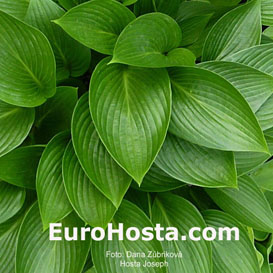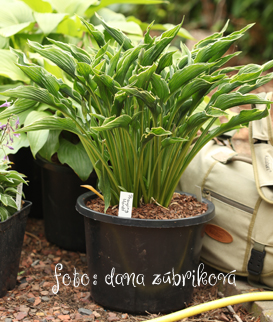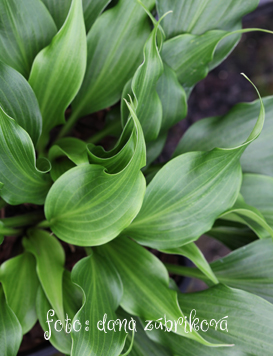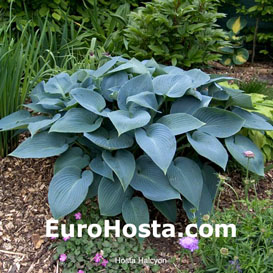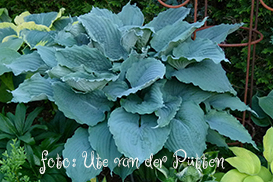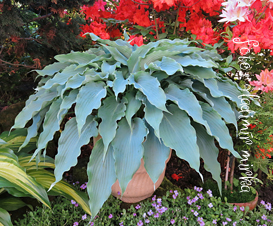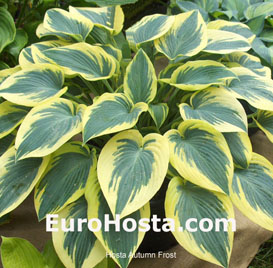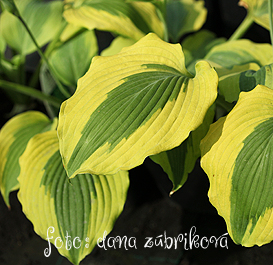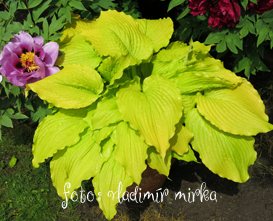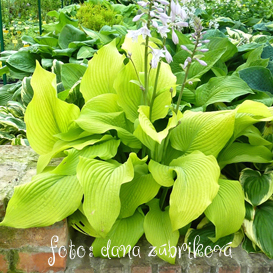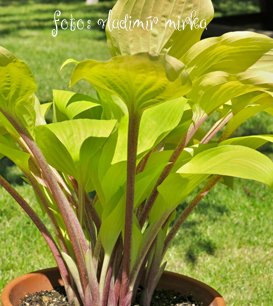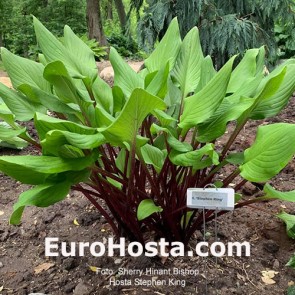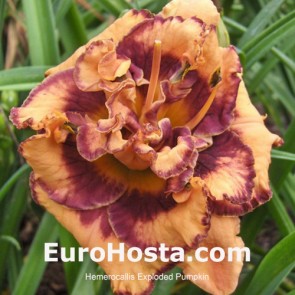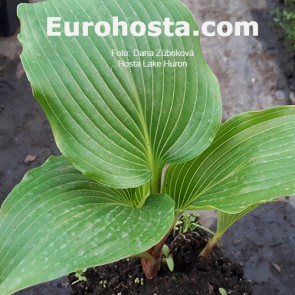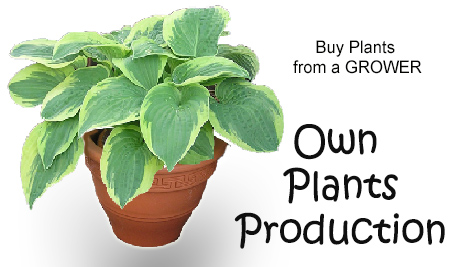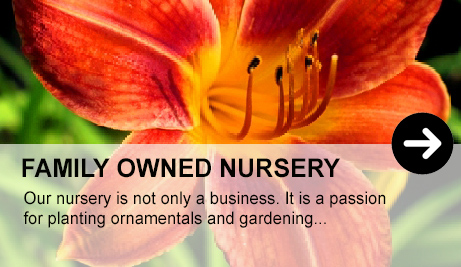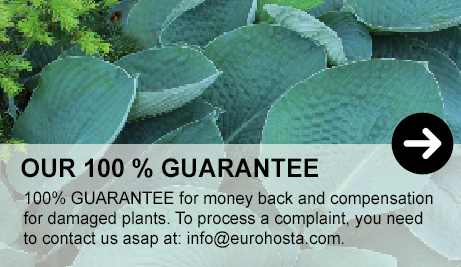Hosta - cultivation
|
Hosta - the most decorative perennial in your garden We are hearing about this genus of perennials more and more often. Why are they more and more popular? It is because of their great variety of colors, sizes and shapes of their leaves. Their use in garden architecture is really versatile. They have been for several decades the most commonly used perennials in the garden architecture in the United States and Europe. There are around 6,000 registered cultivars worldwide, what is by our opinion, quite enough choose from. Rule No. 1 "Hostas grow best in partial shade or full shade". Most of the garden plants do not like shadow and dark places in the garden are prom even for experience garden architects to be properly designed using suitable species. Therefore hostas can be used where other plants do not grow. Rule No. 1 "Hostas like except shadow also moisture." Fulfill this rule is usually not a problem on dark places. In dark corners which are most of the day free of sun, the soil lost moisture more slowly than on sunny place. Some advices on how to plant hostas Young plants irrigate a few times during the spring. Older plants do not need watering as urgently. Beware of the sun. The habitat is drier and warmer, the more leaves may be damaged by afternoon sun. Plants do not die, but brown spots appear on the leaves and they do not look good. There are some cultivars that can tolerate a bit sun. Select the appropriate cultivar for sunnier habitat and reduce the risk of damage. The hostas use to be damaged by snails and game. Choose cultivars resistant to slug and make fences around your land to protect hostas from deer. If you fill that you have not chosen the right place for your hosta, feel free to dig out them in the spring, before the buds are higher the 2-3 cm high, and move them to a more suitable place. Clump of roots can also be divided and thus get plants to plant in a new location or to donate to your neighbor. During autumn hostas lose their leaves and in the spring they re- sprout with even bigger and stronger ones (they sometimes need 3-7 years to mature). They are fully hardy and therefore do not need any ground cover. Several garden tips Garden, full of blue and green cultivars is usually cold and refreshing. Yellow hostas will bring light and fun into dark corners. But they often need at least bit sunshine to develop fully their yellow color of the foliage. Two color hostas bring to the garden creativity and they stimulate your ideas. "One of the advantages of hostas is that you can move them almost any time"
Green is the color of a botanical species. Modern cultivars have thick leaves and distinctive green color like cultivar Joseph.
One of the most original green cultivars is hosta Praying Hands with vase shape.
Modern green cultivar hosta Tongue Twister. |
A few recommendations Plant hostas of different sizes next to each other. Large cultivars will look even larger and small and even smaller. Some cultivars are very attractive. Their color and overall appearance attract visitor's attention in your garden. Plant such cultivars in different corners of your garden, so they do not compete with each other. Small hostas plant in the front part of the bed. Use in the front part of the bed of bright yellow cultivars and blue and dark green cultivars push in to the background. In such way you visually enlarge the space and give deeper the effect. Grow yellow hostas next to blue ones to enlarge blue effect. Usually, it is good to plant very large and large hostas in the background. But sometimes, if you want to achieve a significant effect, you can put large plants directly into the foreground to the angle of visitors. Plant more plants of the same cultivar to each other and thus emphasize the edge of the lawn or flower bed. Group planting multiplies their color effect. Small groups look also very nice. In large-scale plantations does not matter how many specimens are used. Plant guests in the area around tree trunks. Guests grow good also in the soul full of tree roots. They grow rapidly in natural shade caused by tree canopy. Plant hostas in pots. The best cultivars are small and mini cultivars. Distribute pots around the garden, next to benches or on the terrace. Do not forget them regularly watered during dry summer days. If you're from the north, bury them in the garden with pot into soil. This will avoid frost damage to roots. In the south overwinter well in pots on the patio without any problems. Distribute hostas around pond or garden creek. Water and hostas simply belong together. Combine hostas with hardy spring bulbs. After flowering bulbs get wilted hosta leaves soon cover them. Plant hostas next to plant whose leaves or flowers contrast well with their massive leaves. Suitable as mainly Astilbe spp., Pulmonaria spp., rhododendrons, various ferns, boxwood and other perennials and shrubs.
Blue color suits hostas the most. Cultivar Halcyon belongs to the bluest one.
Modern blue hosta cultivar Queen Of The Seas.
In recent years, increasingly popular are blue hosta cultivars with lanceolate leaves.
There are a large number of hostas with variegated leaves. One example - cultivar Autumn Frost.
Modern two-colored cultivars have often wide yellow margin. Hosta Goodness Gracious. |
Hostas by colour Green hosta cultivars. Usually grow well in different conditions. Many of them are relatively well sun tolerant. But they are the most beautiful in the shade or semi-shade places. There is their green color darkest. The leaves of some cultivars are shiny. The green color is a classical hosta color and is well suited as a frame or as a background in the flower bed. Blue hosta cultivars. Blue color of leaves is variable. It depends on the cultivar, the habitat and the season. Some cultivars have leaves blue-green others gray-green and just few are completely blue. Blue color is sensitive to light. The is a special layer of ôwax" on the leave surface. That "vax" also protects leaves from snail damages. The "wax" melts on the sun and the leave color turns to green. If the blue hosta is planted on a sunnier place, blue color recedes and turns to green or greenish-blue soon. Therefore the best place for blue hostas is semi-shade condition. Yellow hosta cultivars. Hostas that are yellow, or have a yellow center, require sunnier habitat. In full shade their color turns to green-yellow or light green. Many cultivars have bright yellow leaves only early in the spring and as season continues, their color naturally changes to yellow-green. There are only few cultivars that retain yellow all season long. There are basically two types of yellow hostas - luttescent and viridescent. - viridescent cultivars - they are intense yellow in spring. Then, later in the season, losing the yellow color, which becomes more green-yellow or even green. For examples viridescent cultivars are: 'Dancing Queen' - lutescent cultivars - some cultivars sprouting as a yellow-green, green-yellow or even green et all. With increasing sun, change color more to yellow and, in the mid-season they are already beautiful yellow. For examples lutescent cultivars are: 'August Moon' Variegated hosta cultivars. Most of the hosta cultivars have two or three-colored leaves. Probably the most common combination is green center and yellow or white edge. Less common is a combination of blue with cream or white border. Variegated cultivars bring into the garden creativity, diversity and fun. Many of them are perfect as solitary and potted plants. A bit of sun usually helps colors to be stronger.
Yellow color make brighter and lighter every corner. Not all "yellow" cultivars are yellow in all circumstances. Some need some sunshine to get really yellow color. Cultivar Dancing Queen. It is a viridescent hosta cultivar.
Older but very popular hosta cultivar Sun Power . It belongs to the lutescent cultivars.
Latest yellow cultivars with red petioles. Their suit them very well. Hosta Designer Genes. |
||||||||||
| |

